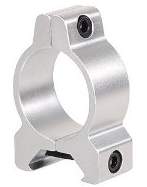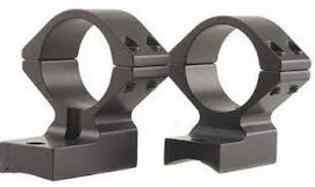
|
7mm-08 Accuracy Tips Start with normal bench rest accuracy reloading tricks. The below methods have been guarded as top secret by match winners for more than 40 years. Consistentcy is the key. During 1000 yard contest, even a small error can have you off target by several inches. Winners of the 1000 yard events normally shoot five shot groups under 5 inches! 1. Weight sort a box of 100 bullets by 20. The 20 lightest, the 20 second lightest, the 20 third lightest etc. For tight groups, you want each bullet in that group to weigh the same. Consistentcy = Accuracy! 2. Weigh each powder charge. Use a digital scale and make sure you are within 1/100 of a grain of your charge desired. Use tweezers to add or remove powder particles from the charge pan. For tight groups, you want each powder charge to be the same. Consistentcy = Accuracy! Note: Most digital scales branded for reloading are junk. The jewelry scales are the most accurate and consistant. The My Weight GemPro 250 is king, and the Jennings Mack 20 is a distant second. I think both brands come with a 20 year warranty. They are fair priced too. The scale is your most important piece of reloading equipment. 3. Full length resize! Neck only resizing for accuracy is a myth for modern bolt action rifles. For older guns with chambers out of specfication, neck only resizing did help. With neck only resizing, the volume inside the case will be determined by how fast your brass cooled after shooting. Very inconsistent! For accuracy, you want the same volume in each case. This way you will have the same powder to air space ratio with each cartridge. The same powder to air ratio means the same size explosion pushing the bullet down the barrel each time. I have tested neck only to full length resizing hundreds of times in many different rifles and full length always came out on top. Consistentcy = Accuracy! Make sure the brass you are using is the same brand and from the same lot.
4. Case trimming. After resizing the case, trim it to lenght. Trim and chamfer cases every time you reload. Also make sure the inside of the case neck is nice and clean. You want the same amount of brass holding the bullet for each cartridge. Consistentcy = Accuracy! 5. Make sure to wash all resizing lubricant from the outside of the case and inside the case neck after resizing. Use some dish soap and warm water. Make sure they are dry before you add primers, powder, and bullets. 6. Experiment with freebore. Once you start getting decent groups with your bullets and powder combinations, experiment with overall cartridge length (O.A.L.). Making your cartridge 1/20 of and inch longer or shorter could have a drastic effect on accuracy. You need the perfect freebore to be in tune with barrel harmonics. Keep experimenting with O.A.L. until you find the perfect freebore for your rifle. I don't really understand how barrel harmonics work, but I know it makes a huge difference. You need to do this with with every bullet and powder combination. If you change your powder charge amount, you will need to start over trying to find the perfect freebore. Same goes for changing bullets. Make sure your bullet is not extended where it touches the bore, or pressures could be in the danger zone. 7. Your rifle. If your bolt action deer rifle can shoot under 1.5 inch groups with factory ammo, you have a good one. Glass bead your action if you have a wood stock. If you have a polymer stock, make sure your action screws are tight. Double check and make sure no part of your polymer stock forend is touching the barrel when you have it on a rest or bipod. Remove your action from the stock and remove any mold flashing, and correct any imperfections that keeps from having a solid mount with the recoil lug. JB Weld is a good filler for polymer stocks. Get your trigger pull down to 3.5 pounds or less. A 2.5 pound trigger is even better, and still safe enough for hunting. Your Scope. Get a more powerful scope for handload development. It takes at least a 12x scope to get consistant 1/2 groups at 100 yards. Make sure your scope is very well mounted. In theory, vertical split type rings from Warne, Millet, Talley, and Leupold align better, and will provide the best accuracy. If weight is not an issue, steel vertical split rings from Warne are the top choice of benchrest shooters. Some I have wanted to try is the one piece integral rings-base from companies like Talley and DNZ as they look rock soild, but still light weight. Having one less attached component to align or shake loose should really help accuracy. It takes
60 to 100 rounds to break in your new rifle action and barrel before it will start shooting
straight. Remember the first 2 or 3 rounds from a clean barrel will be flyers!
|
| Self defense guns riot shotguns deer rifles Low cost jewelry diamond rings gold silver Best CCW handguns concealed carry revolvers Commercial Box Trucks Utility |



